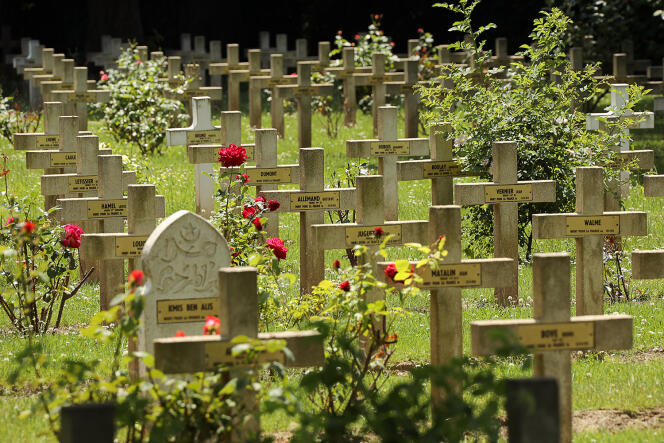A French village
Assevent, commune in the North, near Maubeuge. One thousand eight hundred and fifty inhabitants and a military necropolis from 14-18, where 1,800 French, German, Russian, Romanian, British and Belgian soldiers rest. A cemetery classified as a UNESCO World Heritage Site, since September 20, in a list of 139 funerary and memorial sites linked to the First World War. The distinction obviously gives the greatest pride to the mayor, Marjorie Mahieux, 41, and her constituents. “It’s a prestigious recognition, a great source of pride for the town,” she assures. The elected representative without a label does not despair of obtaining benefits for the attendance of this place, inaugurated in 1923 and still largely unknown.
A binational initiative
Meeting in Riyadh, Saudi Arabia, the UNESCO World Heritage Committee distinguished in a single decision no less than 96 places in France and 43 in Belgium. These are mainly necropolises where fighters of all nationalities are buried, but also improvised cemeteries where soldiers have disappeared, such as Fort Douaumont or the Trench of the Bayonets. The classification file was submitted jointly by Belgium and France, for the first time in 2014, before being relaunched in 2018, on the occasion of the centenary of the end of the First World War.
War and peace
UNESCO, an organization dedicated to education, science and culture, has long questioned the relevance of classifying sites linked to war. She finally recognized the educational and heritage importance of these places. “Although centered on the death of the soldier, these funerary and memorial sites are a permanent reminder, through their symbolism, that each fallen man was also a father, a son, a husband, she writes. This funeral cult is therefore more than a combat cult, it is a civil and humanist cult which invites contemplation, then, gradually, reconciliation and peace. » In this spirit, UNESCO also classified, on September 20, four memorial sites of the Tutsi genocide in Rwanda, and the former torture center of the Argentine dictatorship, installed in the Naval Mechanics School, in Buenos Aires. Areas.
Worldwide recognition
Marjorie Mahieux learned of the news incidentally, through a local radio station. It was not the councilor, but his predecessor who participated in the preparation of the file. “I have not had any official information,” she regrets. “At a time when war has returned to the gates of Europe, where major heritage destruction is being perpetrated by Russian forces in Ukraine, these places of remembrance embody more than ever a plea for peace, dialogue and culture “, only reacted Rima Abdul Malak, the Minister of Culture, on her ministry’s website. This November 11, like every year, Assevent and its neighbor Maubeuge will organize a ceremony which will simply, according to the mayor, “a particular dimension” on this now internationally recognized high place.
